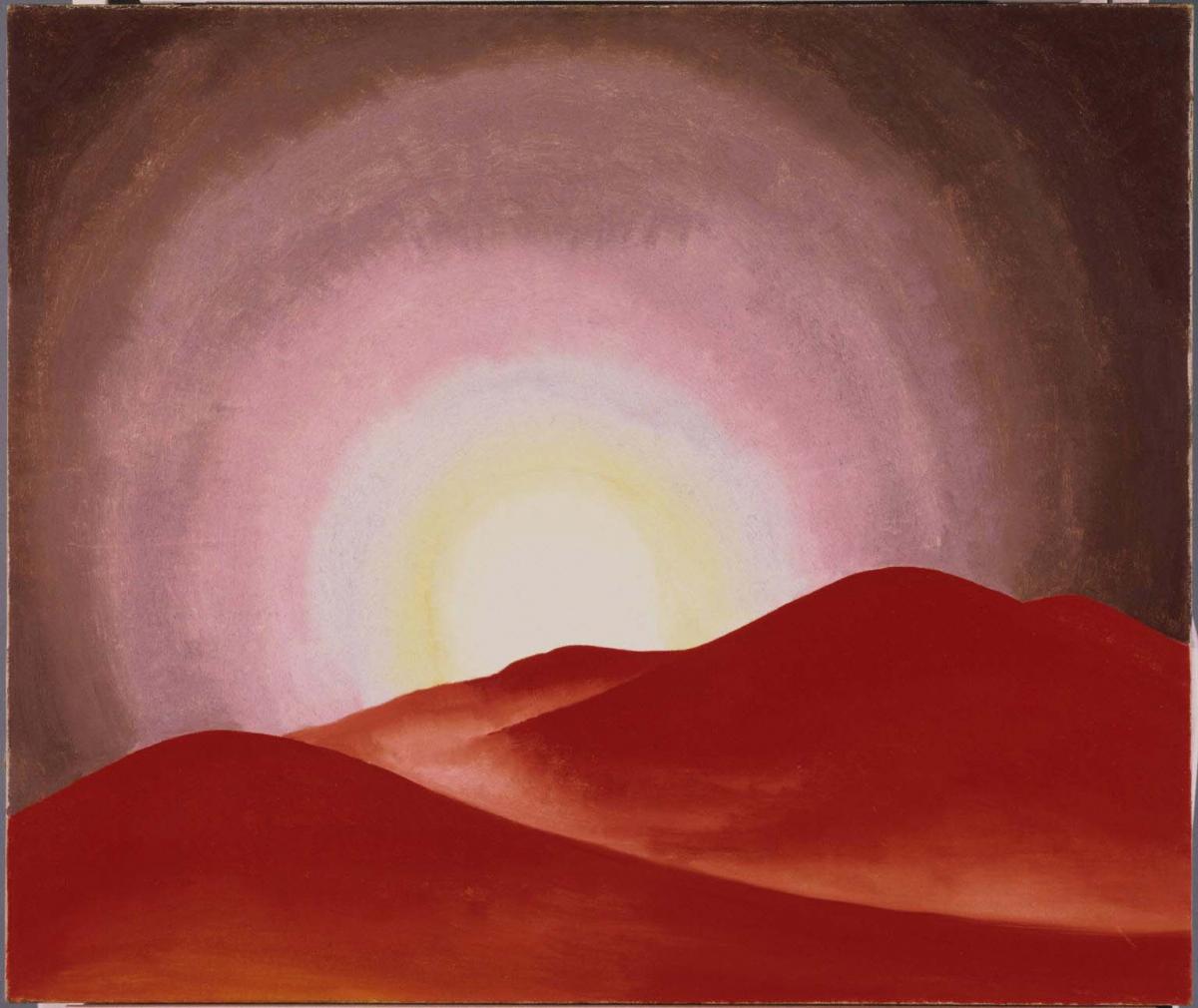Red Hills, Lake George
Georgia O'Keeffe ( 1927 )

With its brilliant color, dramatic luminosity, and simplified forms, Red Hills, Lake George typifies the distinctive approach to landscape painting Georgia O’Keeffe, as well as other artists that were part of Alfred Stieglitz’s circle. Within her oeuvre, this is a transitional work, presaging the stark drama of her later New Mexico landscapes, while also paying homage to her earlier experiences out west and at Lake George.
O’Keeffe tended to allow memory-images to emerge years later recombined and reinterpreted in a fully realized composition. This painting possibly has several influences—memories—that O’Keeffe recalled when she painted this. One contemporary critic, Henry McBride, wrote in 1928 that she derived the theme for Red Hills in Texas. Indeed, her memories of her years teaching in Texas, as well as a brief but memorable trip to New Mexico in 1917 seem to have informed this striking composition. Yet, it is also quite possible that the stunning red in this painting is also derived from her specific memories of autumn sunsets at Lake George. O’Keeffe wrote in a letter in 1923 that “the mountain on the other side of the lake is a dark burning red,” when looking out the window at Stieglitz’s home at Lake George.
O’Keeffe carefully studied the work and writings of German expressionist painter Wassily Kandinsky. Red Hills, Lake George reflects his treatise On the Spiritual in Art. Her experiences would have made her receptive to Kandinksy’s theories and his ideas on color and form and their symbolic and spiritual meanings are transformed into her own set of beliefs. Kandinsky wrote, “Red…reveals, for all its energy and intensity, a powerful note of immense, almost purposeful strength.” At the core—the brilliant white sun—there is a moment of stillness and silence in the midst of intense, radiating color. Kandinsky remarked about white, “[It] has the sound as of a silence that suddenly becomes comprehensible…the nothingness that exists before the beginning, before birth.” For O’Keeffe, this painting was the blending of spirit and matter, when she said, “You paint from your subject, not what you see.”
In 1926, the year before Red Hills, Lake George was painted, Duncan Phillips had already listed O’Keeffe among a group of visionary artists who “have had one aim in common—to link modernity to the infinite by their command of rhythm and by their inventions of new or revitalized instruments of plastic expression.” In Phillips’s estimate, she joined in the search for underlying mystical qualities, which the early American modernists believed dwelled in nature, and with them had begun exploring landscape imagery as a vehicle for self-expression.